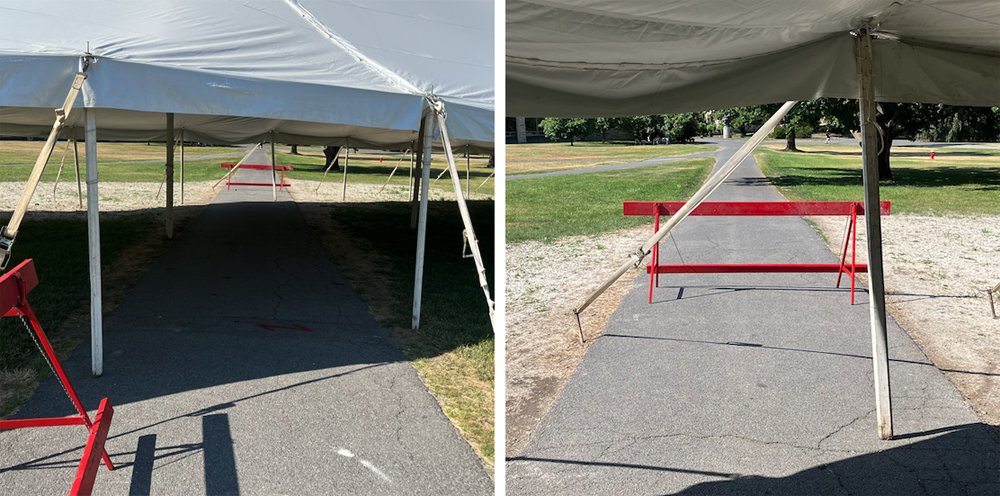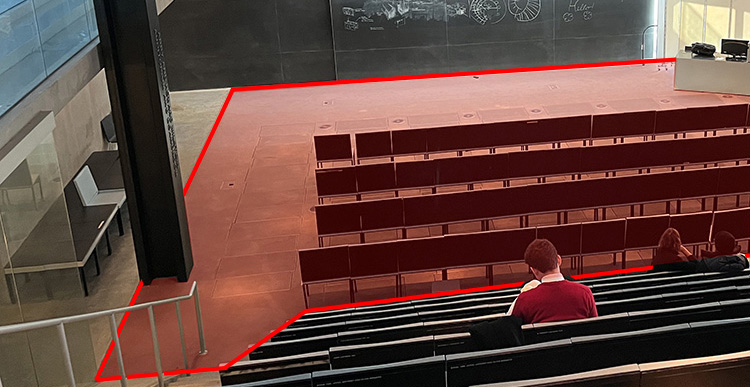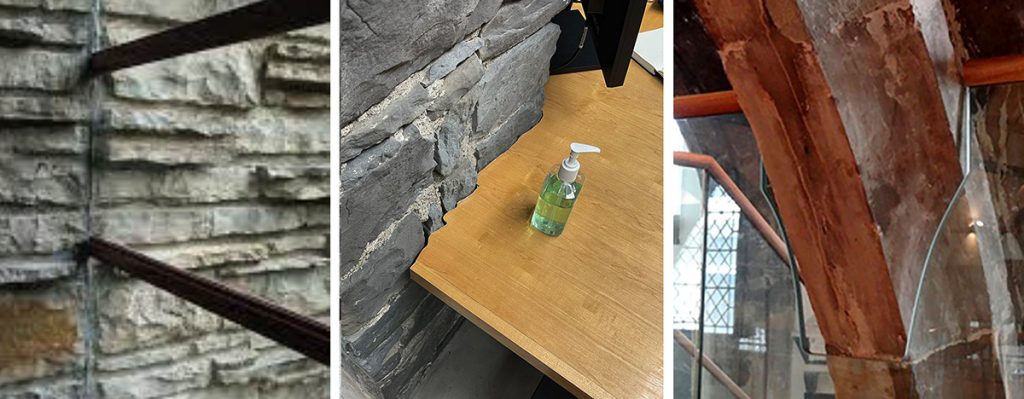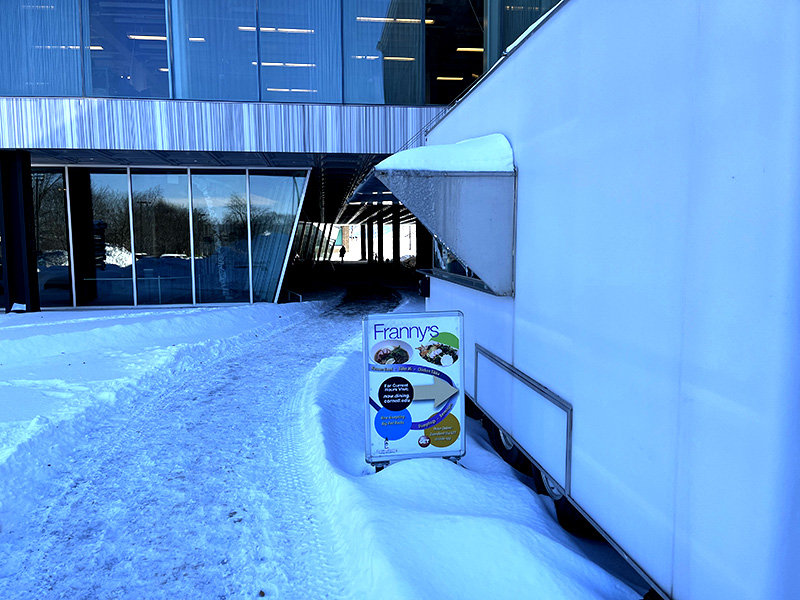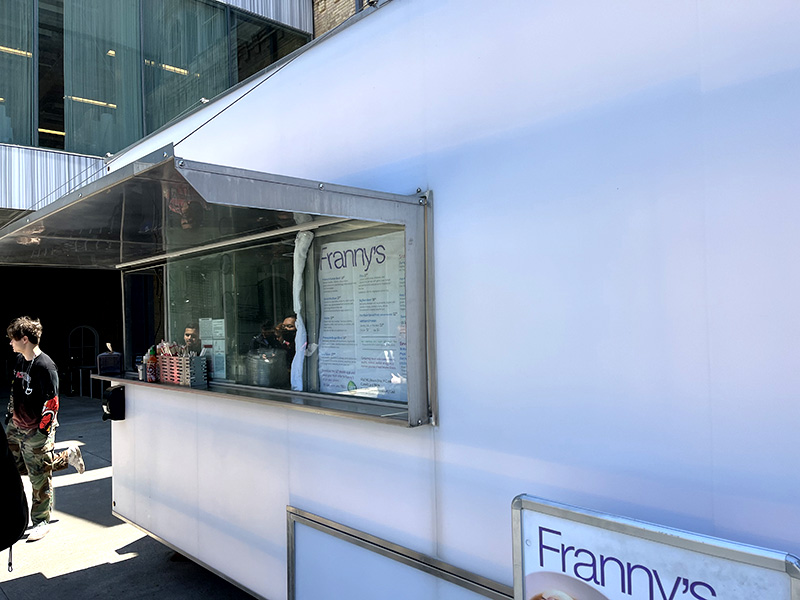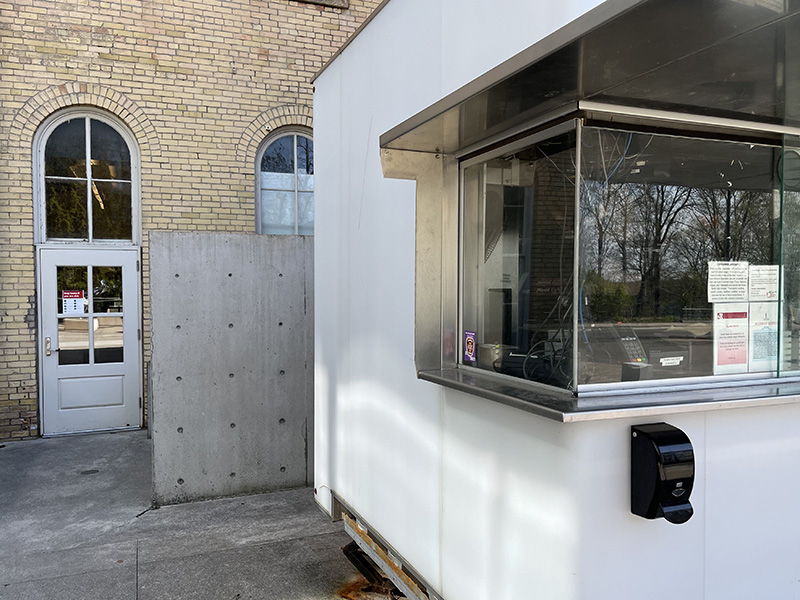[Updated below, June 8, 2022 and July 17, 2022] This morning, I sent an email to Cornell facilities and accessibility staff, as well as the Ithaca Building Division, alerting them to “protruding objects” on the Arts Quad:
To all concerned with access compliance on the Cornell campus:
I noticed today (June 4, 2022) that guy-lines stabilizing a Cornell Arts Quad tent are in violation of ADA and NYS Building Code requirements for access along circulation paths. They constitute “protruding objects” and, as such, are illegal and dangerous.

The United States Access Board states: “To prevent hazards to people with vision impairments, the standards limit the projection of objects into circulation paths. These requirements apply to all circulation paths and are not limited to accessible routes. Circulation paths include interior and exterior walks, paths, hallways, courtyards, elevators, platform lifts, ramps, stairways, and landings.”
The New York State Building Code requires that “At least one accessible route within the site shall be provided from public transportation stops, accessible parking, accessible passenger loading zones, and public streets or sidewalks to the accessible building entrance served.” Chapter 10 (Means of egress) states that “Protruding objects on circulation paths shall comply with the requirements of Sections 1003.3.1 through 1003.23.4” and Section 1003.3.3 confirms that “Objects with leading edges more than 27 inches (685 mm) and not more than 80 inches (2030 mm) above the floor shall not project horizontally more than 4 inches (102 mm) into the circulation path.” Circulation path is defined in Chapter 2 of the Code as “An exterior or interior way of passage from one place to another for pedestrians.”
[June 8, 2022 Update] Cornell has placed cane-detection barriers in front of most, but not all, of the noncompliant guy-lines on the Arts Quad. In the photo below, the circulation path is protected in one direction only:
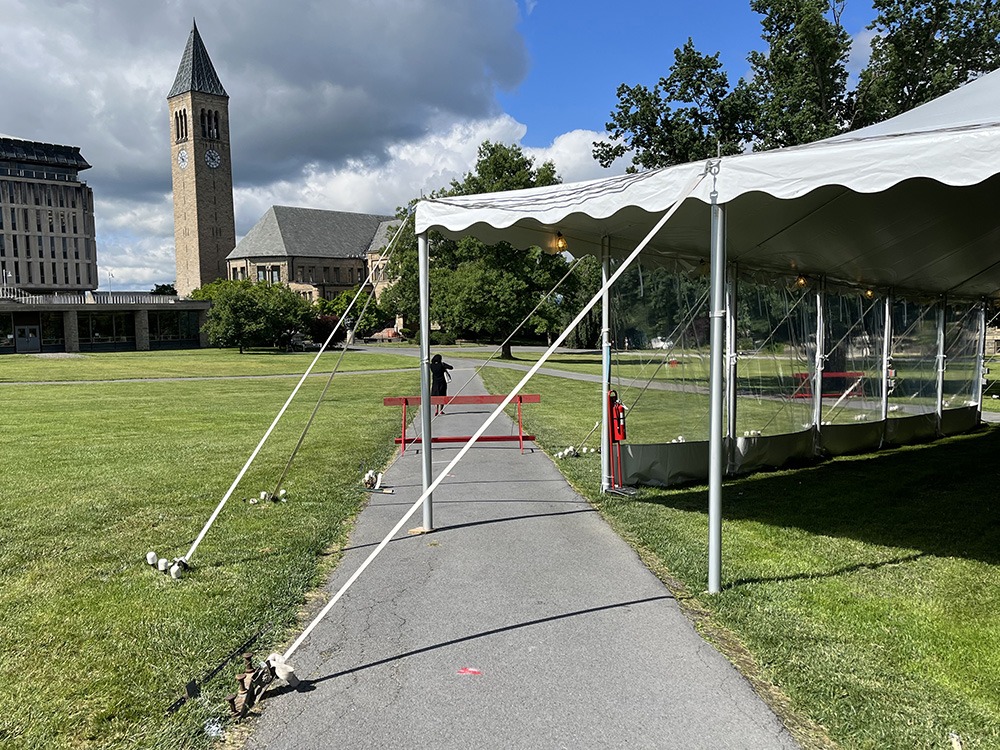
[July 17, 2022 Update] A new tent has been set up on the Arts Quad (see image below), and it has the same issue with ADA noncompliance as was discussed in the June 8, 2022 update above: the cane detection barrier works from the outside-in, but not from the inside-out. Clearly, people move along circulation paths in two directions, and ADA compliance is required for both of them! Guy-lines that stabilize tents become noncompliant protruding objects when they pass through circulation paths between the heights of 27 inches and 80 inches.
